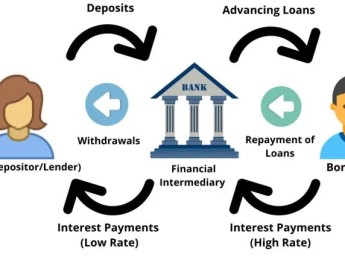Healthcare is a sector that constantly needs to change to meet patient and customer demands. However, organisations can be rendered highly inefficient due to high resource waste, including unutilised talent, equipment, and finances. Lean Six Sigma is a change model that focuses on reducing waste to increase productivity.
Lean Six Sigma emphasises a particular approach, referred to as DMAIC. This focuses on improving existing processes, specifically through measuring, analysing, and controlling. Gaining control over existing processes and functions allows the organisation to truly refine them and have them working at maximum productivity while utilising minimal resources. With simple processes being perfected, resources can be better spent elsewhere.
To truly enact Lean Six Sigma within the organisation, those involved must create an environment that is informed and prepared for change. Ensuring employees know about future changes will allow them to adapt more efficiently and reduce the probability of failure.
Upon completion of this course, participants will be able to:
- Understand the vitality of improving efficiency and minimising waste within healthcare.
- Align Lean Six Sigma project strategy with the organisation’s overall goals and objectives to maximise potential.
- Investigate customer needs and demands and ensure all potential process changes reflect these.
- Apply the DMAIC approach to process improvement.
- Analyse process behaviour utilising accessible data to predict ideal future process changes.
- Identify potential failures and develop process corrective actions in preparation for this.
- Utilise the appropriate Lean Six Sigma tools to reduce variation, defects, cycle times, waste, and costs within the process lifetime.
This course is designed for anyone within healthcare management who wishes to reduce waste while increasing performance. It would be most beneficial for:
- Hospital Managers
- Clinical Directors
- Pharmaceutical Directors
- Senior Executives
- Operations Managers
- Strategy and Development Directors
- Planning Managers
- Resource Managers
This course uses a variety of adult learning styles to aid full understanding and comprehension. Participants will review real-world examples of established organisations that have utilised Lean Six Sigma to highlight how this has led to success and identify any areas that may still need improvement.
They will have the opportunity to participate in a variety of learning exercises and methods, including presentations, video materials, case studies, and group activities. This combination of learning exercises will help maximise the participants' learning potential and guarantee that they will develop a strong understanding of the taught content and related skills.
Day 5 of each course is reserved for a Q&A session, which may occur off-site. For 10-day courses, this also applies to day 10
Section 1: Introduction to Lean Six Sigma
- Defining what Lean Six Sigma is, its purpose and advantages.
- Exploring how Lean Six Sigma has developed over time, and how it can be utilised within healthcare organisations.
- Categorising projects through preliminary project chattering to aid in prioritising action.
- Different tools and techniques for identifying opportunities.
- Investigating other healthcare organisations that utilise Lean Six Sigma and analyse their success.
Section 2: Existing Change Models
- Evaluating traditional change models and identifying factors that make them ineffective.
- Comparing organisations that use traditional models and newer models and analyse the disparity of success.
- How uncontained change and lack of control leads to increased rate of failure and reduced productivity.
- Basing change on symptoms versus causes, and having an overall lack of context for solutions.
Section 3: Project Anatomy
- Understanding the Lean Sigma roadmap to process change.
- Following the DMAIC approach in alignment with Lean Sigma – define, measure, analyse, improve, and control.
- Establishing clear and concise goals for the project, aligning them with patient demands and organisational wants.
- Removing waste from the ‘value-stream’ creates a clear process improvement path.
Section 4: Planning for Future Changes
- Creating thorough plans detailing the desired process change and how it can be achieved.
- Focusing on the Lean Sigma Aspects, including the concept of ‘subtracting, not adding’.
- Identifying the organisation’s primary sources of waste and prioritising the reduction of these – resources, non-utilised talent, inventory, and processing.
- Utilising various techniques and methods to efficiently strategise the implementation process.
Section 5: Implementation
- Creating an environment where all individuals are change-conscious and prepared.
- Developing organisational competence to aid in implementation success.
- Monitoring performance throughout the change process to swiftly address hardships and mitigate potential risks.
- Analysing performance data to identify short-comings and specific successes to modify strategies and plans.
Upon successful completion of this training course, delegates will be awarded a Holistique Training Certificate of Completion. For those who attend and complete the online training course, a Holistique Training e-Certificate will be provided.
Holistique Training Certificates are accredited by the British Assessment Council (BAC) and The CPD Certification Service (CPD), and are certified under ISO 9001, ISO 21001, and ISO 29993 standards.
CPD credits for this course are granted by our Certificates and will be reflected on the Holistique Training Certificate of Completion. In accordance with the standards of The CPD Certification Service, one CPD credit is awarded per hour of course attendance. A maximum of 50 CPD credits can be claimed for any single course we currently offer.
- Course Code IND05-129
- Course Format Classroom, Online,
- Duration 5 days














